













The magazine of the art-form of the photo-essay
“A free, really high quality photo-essay magazine. Fabulous!”
Stephen Fry. British actor, writer and film & documentary maker

April 2014 issue

by Beverly Joubert

An estimated 37,000 elephants were killed last year and they continue to be slaughtered at a rate of one every 15
minutes. Yet as shocking as these figures are, statistics sometimes divorce us from the reality, and we loose sight of
the individual tragedy of losing each and every one of these unique gentle giants; every one of them a vital part of the
African wilderness. They are an active and vital part of the intricate architecture of nature.
I wanted to breath life back into these statistics, show the beauty of individual elephants that have touched our lives.
An elephant, the Maasai called Torn Ear is one such example. This majestic beast, 60+ years old who had a soft soul
and tusks so long they almost touched the ground, was killed by poachers recently. It was a long and painful death
as the shaft of the arrow was embedded close to his vital organs. But the time he was found it was too late to save
him. This is more than the loss of one elephant; it is the loss of a friend, a strong bloodline, and a character that can
never be replaced. Now we fear for remaining bulls in the area. An elephant called ‘One Ton’ who was a companion
of ‘Torn Ear’, is one of the few bulls that still have exceptionally large tusks in this area. Now more than ever he
needs our protection. There are a handful of places where elephants are living as they should, following their natural
migration route from season to season without the threat of man’s greed. Many of these images were taken within
these havens, both in Botswana and Kenya.
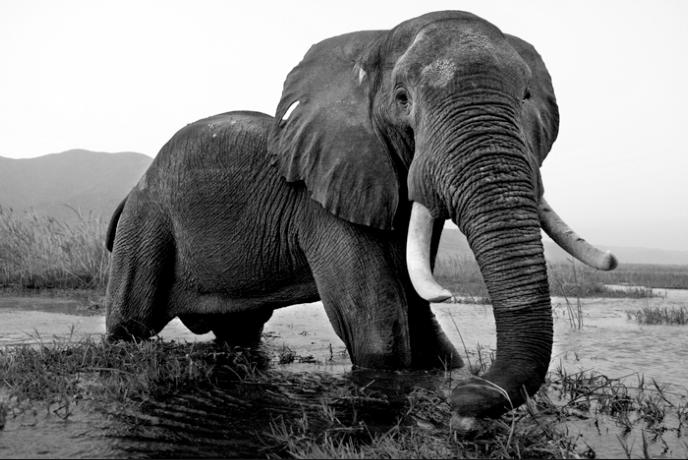
‘Giant’ – Through my photos I hope to create awareness and also a love for elephants. If people aren’t drawn to the
essence of elephants, then they may not care. It’s only by caring that people will begin to speak up against their
suffering. This elephant came over to our canoe while feeding gently on the swamp grasses on the Zambezi River.
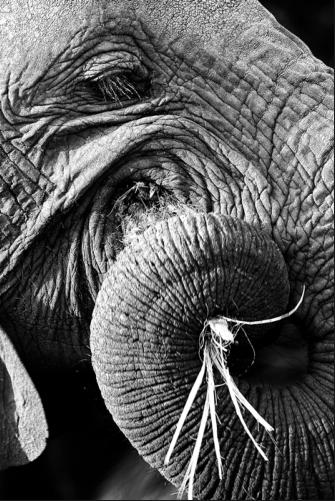
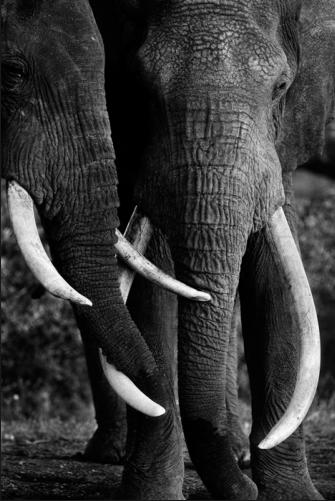
‘Curl’ - Sometimes you can create images that represent
an entire animal just by looking at the parts that most
represent it. I see my photography as more than art and
self-expression and far more than documentary alone; it
is a powerful tool of communication that can be a catalyst
for change.
‘Ivory’ - Why would you want to destroy an elephant for its
tusks? Their beauty and worth as living animals far
exceeds anything any human can make out of ivory. The
pleasure that can be shared by watching them in the wild
is much greater than any that can be gained from a
personal ornament, lifeless, dead, a blood token of a rich
life taken.
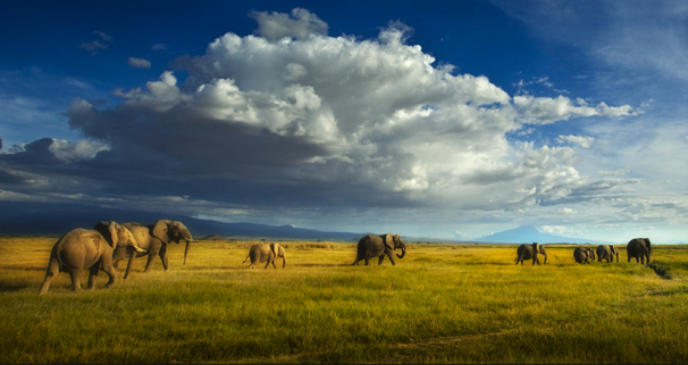
‘Travelers’ - Elephants are definitely an element of change in the wilderness, but at the same time they are planting
trees in another area. The way they plant is through germinating seeds in their stomach and then defecating. Those
seeds are planted, and grow, and bring new trees. They are true landscape artists. Humans are the ones causing the
destruction when we close off their migration routes and force them into small areas.
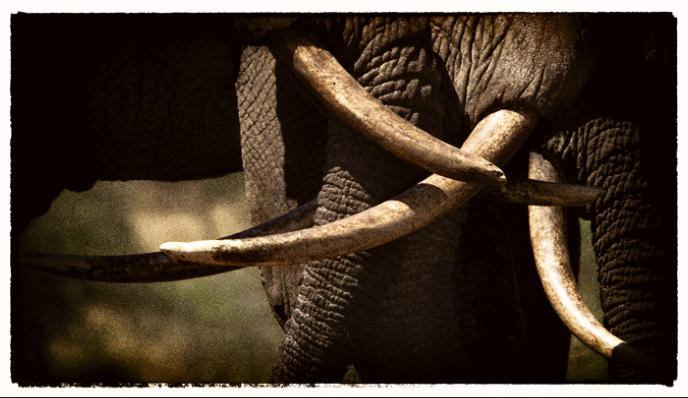
‘Ancient Tusks’ - Elephant bulls all jostling for water in the lava forest in the Chyulu hills at Ol Donyo in Kenya.
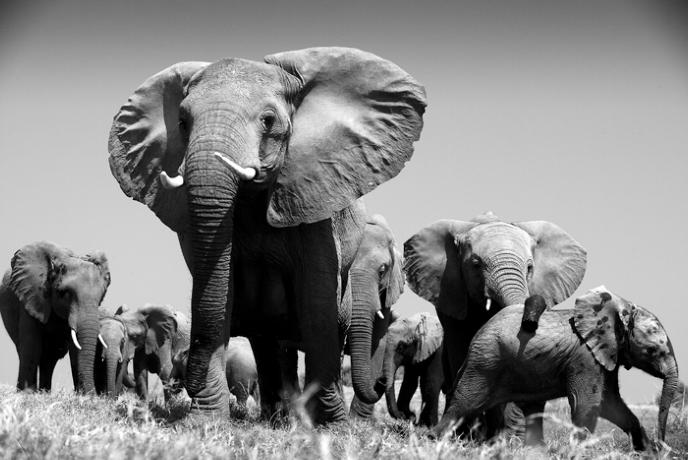
‘The Family’ - A new calf is usually the centre of attention when amongst the herd and the elephants will affectionately
touch and caress their newest member with their trunks. As I watch them, I can think of no better embodiment of
‘family’. I think we can all learn from watching elephants; some things go beyond the animal/human divide.
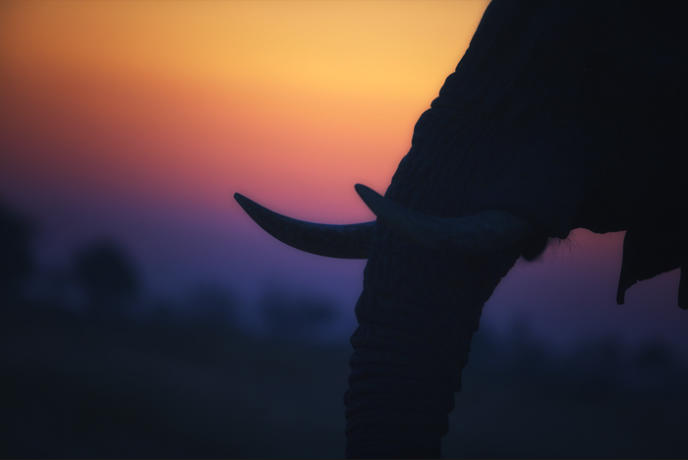
‘Elephant Time’ – Elephants are iconic and a cornerstone species as they are playing a critical role in maintaining the
natural structure of the African ecosystem. If we allow elephants and other predators to be poached to the point of
extinction the ecosystem will eventually become sterilized, so sterile that nothing will be able to live there. We need
these iconic animals to keep the wilderness areas in balance.
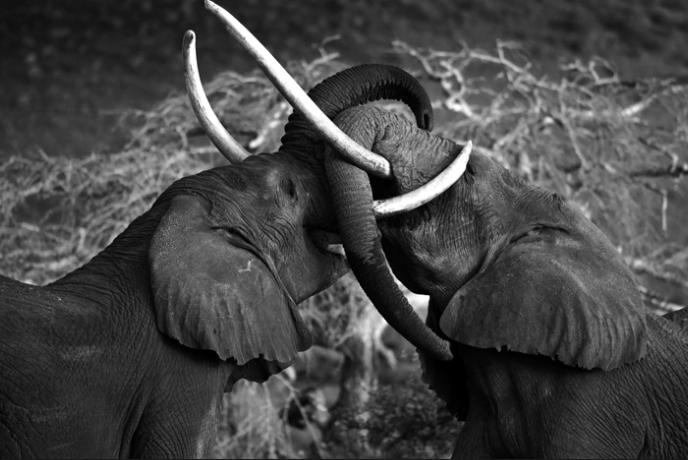
‘Surrendering to the Thirst’ - The challenge was to get water when the dominate bull had a full trunk. Trunks and tusks
were knocking against each other constantly as they battled to get a mouthful. Due to the pressures of human conflict
more and more elephants are congregating in smaller areas, creating tension amongst the bulls.
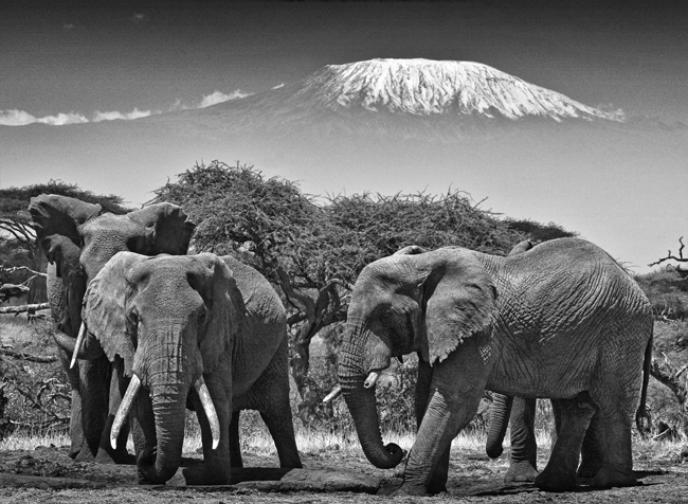
‘Kilimanjaro Giants’ - Elephants of Ol Donyo framed by Kilimanjaro with a snowy peak. This is how elephants are
meant to live: grazing in the open plains, unrestricted, relaxed, in harmony with nature, with their family close by. Once
you understand them, seeing an elephant in a zoo is a heartbreaking experience as you realize they may look the
same, but internally they have lost all that it is to be a wild elephant.
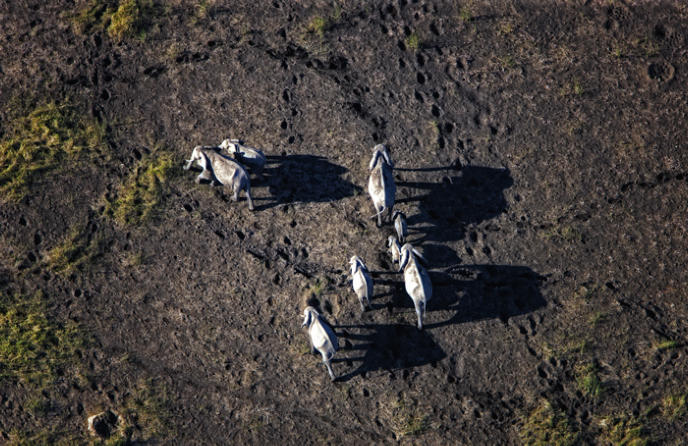
‘Footprints in the Sands of Time’ – Elephants follow the same ancient paths as their ancestors – you can almost see
the path through the etchings in the sand. Like the sun dial, from above you can tell the time of day by the long
shadows they cast.

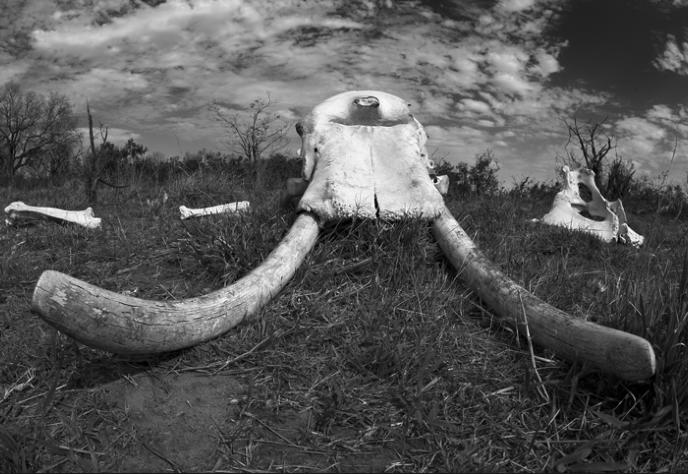
‘Celebration of a Natural End’ – An estimated 37,000 elephants are killed each year due to the growing demand for
ivory — that is close to 100 elephants a day, one elephant every 15 minutes. It is therefore a blessing to see elephant
remains that mark a natural death in the wild.
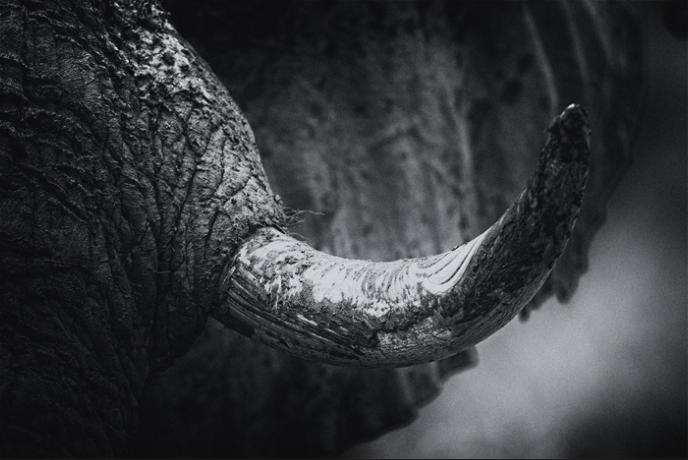
‘Mud Ivory’ – The term ‘Blood Ivory’ has become commonplace as more and more elephants are killed for their tusks.
However this ivory is bathed in mud and belongs to an elephant who was thoroughly enjoying a mud bath. Let mud
not blood and delight not death surround our remaining elephants.
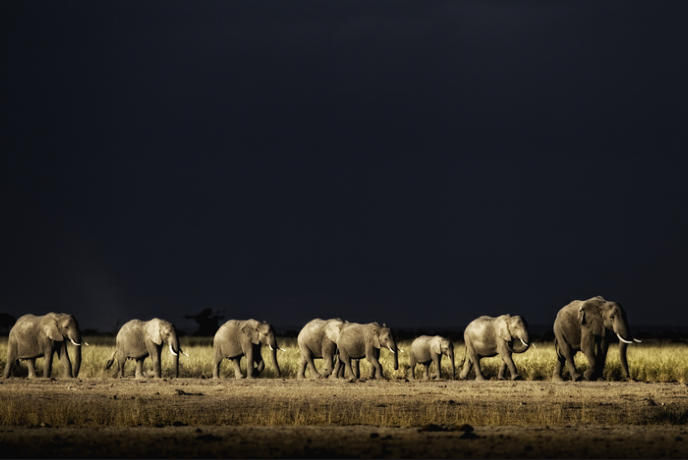
‘Approaching Storm’ - Dark foreboding clouds foretell a release of heat and rain. This is symbolic of the dark uncertain
times elephants are facing.
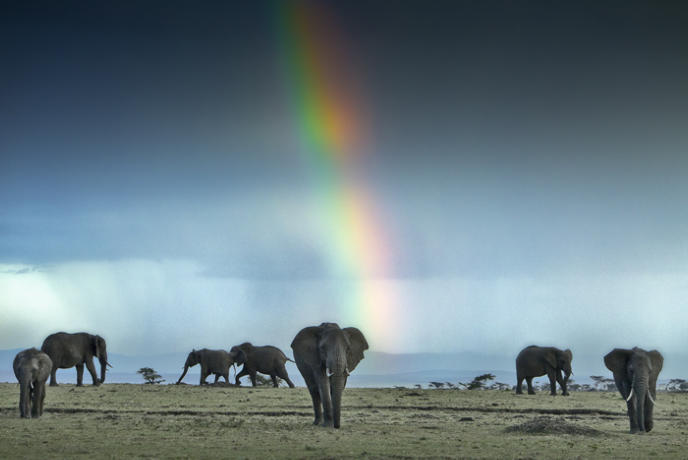
‘Prism of Light’ - Rainbows are a testament to the fallen rain and in this case it was still in the distance at Mara Plains.
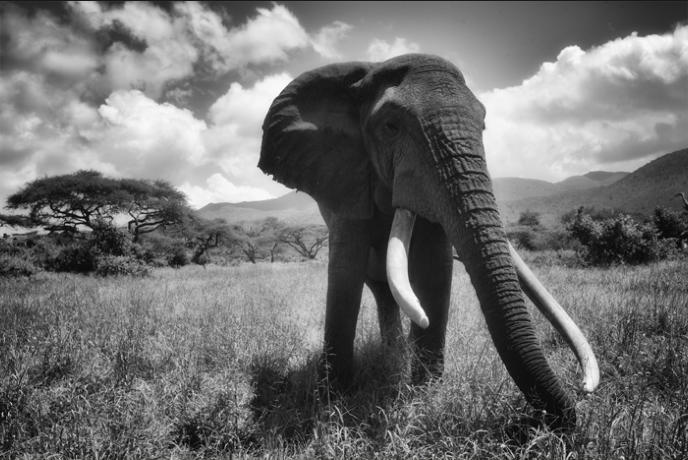
‘One Ton’ – The sound of those big ears as they flap skin against skin, the soft tread of large feet as they whisper
through the grass - all of these sounds are so familiar to me. Every one of them is a comfort. They are each part of the
natural tapestry of life that surrounds us here; an organic weave of sounds, smells and sights that are so natural - it is
food for ours souls.
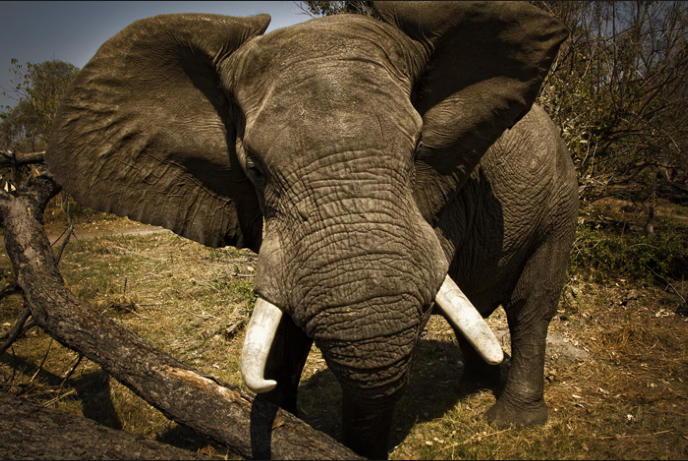
‘Demonstration’ - It is so important to understand elephant behaviour. They are not aggressive animals and they will
tell you if you are getting too close. Ears extended out, this is a warning and we always heed it. Too many elephants
are shot because people don’t understand that they have stepped over a line and are presenting a threat to an
elephant. They are will only charge if provoked.
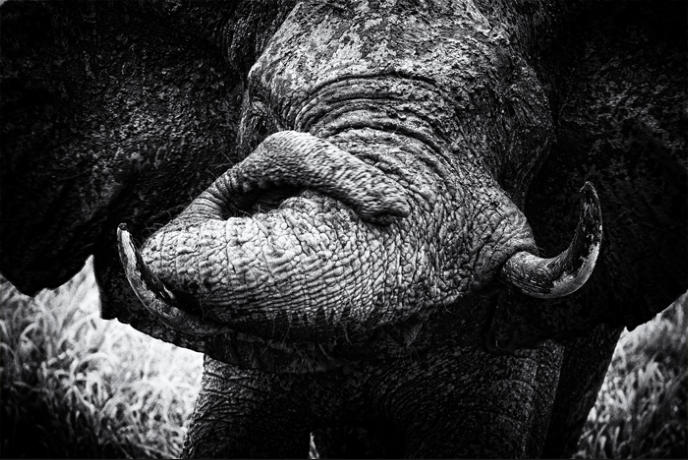
‘The Delight of Mud’ – There is nothing more pleasurable than watching an elephant playing in mud. This elephant
even lost control of his trunk at times because he was in such a state of mud ecstasy. Here the design and grooves in
the skin resemble dried cracked earth.











